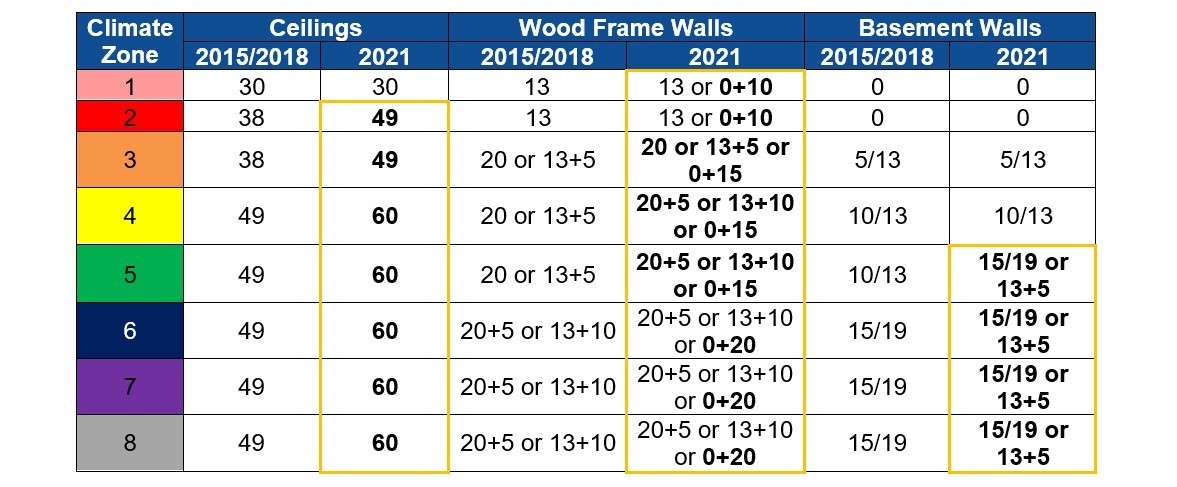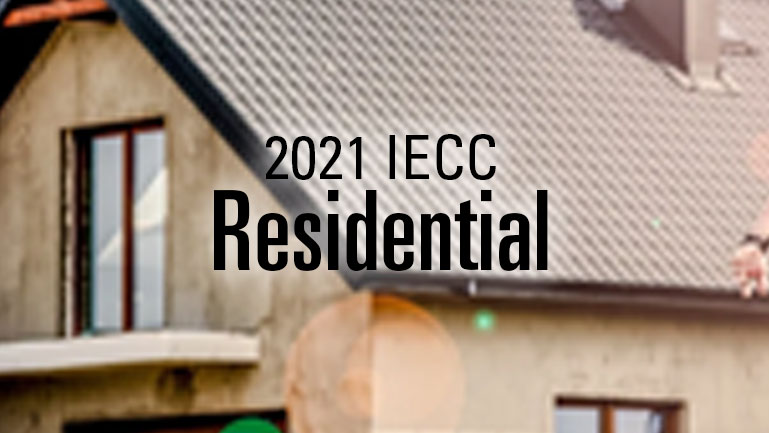Every three years, the International Code Council (ICC) goes through the process of updating the building codes outlined in the International Energy Conservation Code (IECC). The IECC is the model energy code in the U.S., and updates to the 2021 edition were just finalized by the ICC. Changes to the codes come from ICC staff, industry groups, government, and the general public. The 2021 IECC contains a large number of changes that impact building energy use. In this blog, we will be discussing only the Residential sections of the code, with a focus on the building envelope. For the 2021 IECC changes to the Commercial section, please go here.
The 2021 Residential IECC calls for increased R-values in insulation in attics, slabs, and continuous insulation for walls. It also includes new options in the prescriptive tables for insulation on wood-framed walls and basement walls. Increases were also made to performance requirements for windows in most climate zones. The table below highlights the insulation R-value changes, and the cells outlined in yellow indicate a change from the 2018 code to the 2021 code.

New to the 2021 IECC is a section for "Additional Efficiency" measures. Beyond the typical "mandatory" and "prescriptive" or "performance" requirements, builders will also have to achieve an additional 5% energy savings. This can be done through the "performance" methods (energy modeling or ERI scores), or by selecting one of five options from a new section in the code. The options include:
· Enhanced envelope insulation
· More efficient HVAC equipment
· More efficient hot water system
· More efficient ducts
· Improved [reduced] air leakage.
The 2021 IECC also has updated the climate zones used to determine where energy conservation measures in homes are required. Climate zones (CZ) are defined at the county level and are based mostly on winter and summer temperatures. This update to the climate zones is based on measured weather data over the past 50 years and resulted in about 10% of the counties in the U.S. changing the CZ they are in. In most cases, the shift is to a lower CZ, reflecting a general warming of the climate in those areas.
While the 2021 code has been released, it typically takes states and other jurisdictions 1-5 years to adopt the latest codes. As a result, we will start seeing these changes more frequently within the next five years. Additionally, adoption of the IECC is decided at the state level. You can visit this website to determine which version of the IECC your state is currently using.
Notably, there were a significant number of changes to the 2021 IECC – far more than we could cover in a single blog. For a more thorough review of the entire spectrum of changes to the 2021 IECC, you can watch this webinar by Pacific Northwest National Lab (PNNL) .

